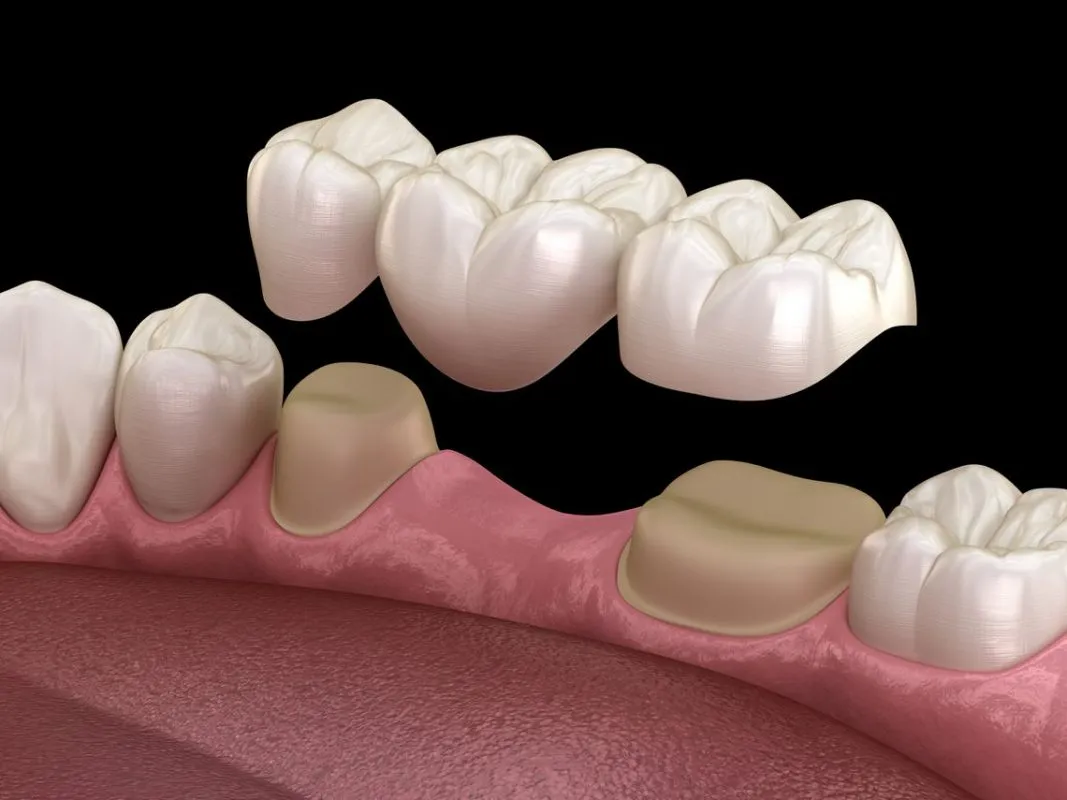Replacing missing teeth is a key step in maintaining oral health, restoring function, and achieving a confident smile. Two common options include dental implants and bridges. Understanding their differences, advantages, and potential limitations is fundamental for making an informed decision. Let’s explore these solutions and helpful insights for dental patients.
What is a Dental Bridge and Implant?
A dental bridge consists of a prosthetic tooth (or teeth) held in place by crowns placed on adjacent teeth. Bridges are fixed, non-removable devices that “bridge the gap” left by missing teeth. The material used often includes porcelain, ceramic, or metal fused with porcelain for strength and aesthetics.
A dental implant, on the other hand, is a titanium screw-like structure embedded in the jawbone, acting as an artificial tooth root. Once the implant integrates with the jawbone (a process called osseointegration), it supports a dental crown or other prosthetic structures. Implants are known for their durability and ability to mimic the appearance and function of natural teeth.
What is Better, a Bridge or an Implant?
Whether a bridge or an implant is better depends on individual needs, preferences, and clinical conditions. The choice largely depends on oral health, the number of missing teeth, and budget. Consulting with a dentist helps determine suitability for either option. Here are the key advantages of both options.
Advantages of Dental Bridges
Dental bridges restore the appearance and function of missing teeth by filling the gap using adjacent teeth as support. They involve a shorter treatment timeline compared to implants and do not require surgical procedures. Bridges can be a cost-effective option in the short term.
They are particularly suitable for patients with insufficient jawbone density or those who are not candidates for implant surgery due to medical conditions.
Advantages of Dental Implants
One of the primary benefits of dental implants is their durability and longevity, as they are designed to last for many years with proper care. They also provide superior stability compared to bridges. Implants mimic the function of natural teeth, which makes them secure and comfortable.
Dental implants preserve jawbone density by stimulating bone growth, a key factor in maintaining facial structure and preventing bone loss. Aesthetically, implants blend seamlessly with surrounding teeth, creating a natural and pleasing appearance. For patients seeking a low-maintenance option, implants offer convenience. They do not require special cleaning processes and can be cared for like natural teeth. These advantages make dental implants a reliable and effective solution for tooth replacement.
Why Would a Dentist Not Recommend an Implant?
While dental implants are highly effective, they may not be recommended in certain cases.
- Insufficient Bone Density: If a patient has experienced significant bone loss in the jaw and does not wish to undergo bone grafting procedures, an implant may not be viable.
- Chronic Health Conditions: Conditions such as poorly managed diabetes, autoimmune disorders, or osteoporosis can hinder healing and integration of the implant, leading to complications.
- Lifestyle Factors: Smoking, poor oral hygiene, or a history of severe gum disease can affect the success rate of implants. Dentists may suggest alternative solutions in such scenarios.
- Budget Constraints: While dental implants offer long-term value, the initial investment may not be within some patients’ budgets. In such cases, a bridge may be a more affordable short-term solution.
Patients should openly discuss their health history and lifestyle with their dentist to assess whether implants are practical for their needs.
Can One Switch From a Bridge to a Dental Implant?
Switching from a dental bridge to an implant is possible, but it involves specific steps. It starts with the dentist evaluating the bone density to determine if other procedures, such as a bone graft, are required before implant placement.
The existing bridge will be removed carefully, the supporting teeth (often capped crowns) will be assessed for their current condition, and the site will be prepared. Once preparation is complete, the dentist places the implant into the jawbone. Once the healing and osseointegration process are complete, a new crown or prosthetic tooth is attached to the implant.
Switching to an implant often provides longevity, better function, and enhanced aesthetics, but it is a time-intensive and involved process. Discussing the possibility with a dentist can offer a clearer treatment plan.
Want to Learn More About Dental Implants?
Choosing between a dental implant and a bridge depends on your unique dental needs, overall health, and long-term oral care goals. Both options offer valuable benefits, and each has its own set of benefits. To learn more about dental solutions for your missing teeth, contact dental experts who can provide personalized guidance and determine the right path for your oral health.








Leave a Reply